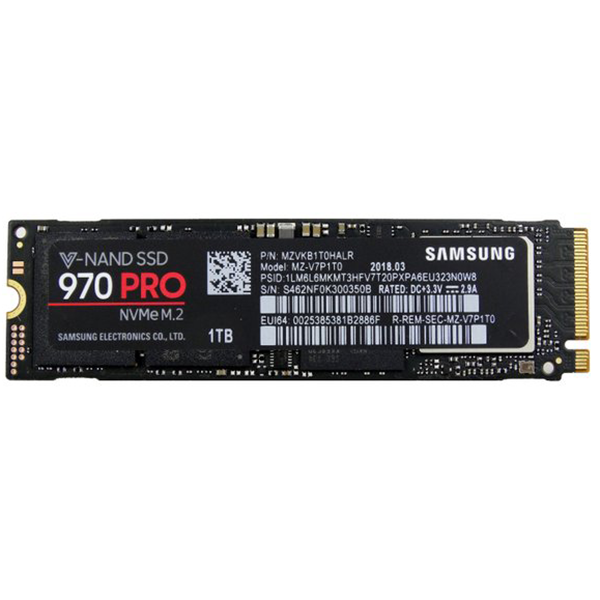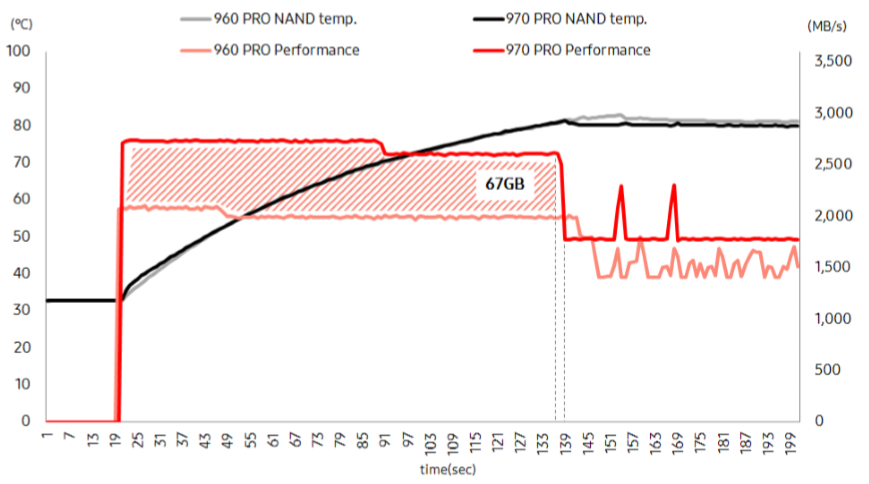Early Verdict
The best just got better. But high prices will keep all but professional users away from the Samsung 970 Pro. If your workload involves applications with heavy sequential write workloads, there is nothing comparable on the market today.
Pros
- +
Class-leading performance
- +
MLC flash
- +
Amazing endurance
- +
Excellent software package
- +
Full disk encryption
Cons
- -
Expensive
- -
Really expensive
- -
No 2TB option
Why you can trust Tom's Hardware
Specifications & Pricing
Samsung has continued MLC flash development for consumer SSDs after every other NAND manufacturer abandoned it in favor of denser TLC flash. Today we'll see the benefits of Samsung's continued MLC flash development first hand.
Samsung's NVMe Pro series has lost some market share over the last three years, but overall it has dominated the consumer/workstation SSD segment since it came to market in 2017. On the high-end workstation side, Intel's 3D XPoint-powered Optane 900P provides an untouchable level of performance in random workloads, but it's pricey. Pressure also comes in the form of lower prices for "good enough" high-speed storage products that bleed into the enthusiast and power user market. That's expected: Samsung's own NVMe EVO series has historically been the NVMe Pro series' main competitor.
The biggest threat comes from SSDs that slot between the 960 EVO and 960 Pro in performance but are significantly cheaper. In January, we began to see proof that emerging products fueled by new 64-layer flash could leapfrog the Samsung 960 EVO and encroach on the premium 960 Pro's once untouchable performance lead. In the months since, we've tested products like the HP EX920 and Adata SX8200 (reviews coming soon) and found real threats to Samsung's consumer NVMe empire. Both products surpass the 960 EVO in most performance metrics, but trail in the endurance race.
The changing landscape only impacts a small portion the new 970 Pro's target market. The sliver of enthusiasts and power users that consider the Pro series often choose lesser products due to pricing. The Pro series' high pricing doesn't faze workstation users with heavy write workloads that consist largely of sequential data (where the 970 Pro is faster than Optane 900P). These are the "creatives" that process 4K HDR video, supersized megapixel pictures, and audio at high sampling rates. Just beyond the creatives are the professional users running CAD/CAM applications that require more capacity than Optane, enhanced endurance, and performance that you can't find with today's TLC flash.
Specifications
Samsung released the 970 Pro in 512GB and 1TB capacities, but the company didn't release a 2TB model. We hope it will bring one to market in the future. The 960 Pro series has a 2TB model, and the new 970 EVO family does, too.
The 970 Pros deliver 3,500MB/s of peak throughput during sequential read workloads. Sequential write performance weighs in at 2,300 MB/s (512GB) and 2,700 MB/s (1TB). Both 970 Pros write random data at 500,000 IOPS, but the 512GB model can't achieve this high watermark during random read workloads. The 512GB Pro is no slouch, though, with an impressive 370,000 IOPS of random read performance.
That performance comes courtesy of the new five-core Phoenix NVMe controller. The Phoenix dedicates one core to communication with the host system and is similar to the 960's Polaris controller. The new 64-layer V-NAND (3D) flash also contributes reduced program times that help improve latency. Samsung says that the new fourth-gen V-NAND increases energy efficiency by 30%. That's because its input voltage is only 2.5V, which is a 30% reduction from the previous-gen flash.
Get Tom's Hardware's best news and in-depth reviews, straight to your inbox.
Pricing, Warranty, And Endurance
The 512GB Samsung 970 Pro comes to market at $329.99 while the 1TB model retails for $629.99. The prices are obviously high in this TLC SSD world, but the 970 Pro is a different animal compared to the other consumer SSDs. The series retains the same five-year warranty as the 960 Pro, but it comes with a higher endurance rating.
Samsung says it increased reliability by 20% through changes to the material that lines the inner walls of the NAND cells. Samsung also improved the error correction engine, which leads to large endurance gains over the 960 Pro and its previous-gen 48-layer NAND. Samsung increased the endurance rating for both 970 Pro models by 50%. The 512GB model supports up to 600 terabytes of write endurance, and the 1TB model extends that up to 1,200 terabytes.
Features
The 970 models are the first Samsung consumer SSDs to ship with the new NVMe 1.3 specification. Samsung also uses the Phoenix controller with the OEM PM981 client SSD, but that SSD leverages the NVMe 1.2a interface.
Thermal throttling is difficult to eliminate with M.2 SSDs because there is much less surface material under the controller to absorb heat. With the 960 Pro series, Samsung introduced the concept of a copper strip embedded in the branding sticker. A few companies attempted to copy the design but didn't achieve the same level of success. Samsung also followed Silicon Motion's lead and placed a thin nickel metal cover over the Phoenix controller to aid in dissipating the heat away from the center mass where the controller circuitry resides.
Effectively combating thermal throttling requires both hardware and software. Samsung's Enhanced Dynamic Thermal Guard (DTG) algorithm allows you to transfer more data before the SSD enters a reduced performance state. Even after thermal throttling takes hold, the 970 Pro still transfers data faster than the previous-gen model. As a result, Samsung claims the 970 Pro delivers up to 26% more performance and improved consistency during heavy random write workloads. Consistency is not an issue for most consumer workloads, but it may impact workstation users with heavy workloads.
The new 970 series supports Class 0, 256-bit full disk encryption (FDE) with Microsoft's eDrive and TCG Opal 2.0. eDrive is an encryption feature found on Windows 8, 8.1, and 10. Businesses often use TCG Opal to secure notebooks and desktops because it provides remote administration features.
Software Package
Samsung's Magician management software supports the new 970 Series. We haven't tested the new software yet, but we don't expect any new features. The same can be said for Samsung's Data Migration software that simplifies cloning your data from an existing drive to a new drive.
Samsung also released a new custom NVMe driver. The Samsung 3.0 NVMe driver improves compatibility with operating systems as far back to Windows 7. Samsung didn't give us many details on the new driver, but we should learn more over the coming month.
Packaging
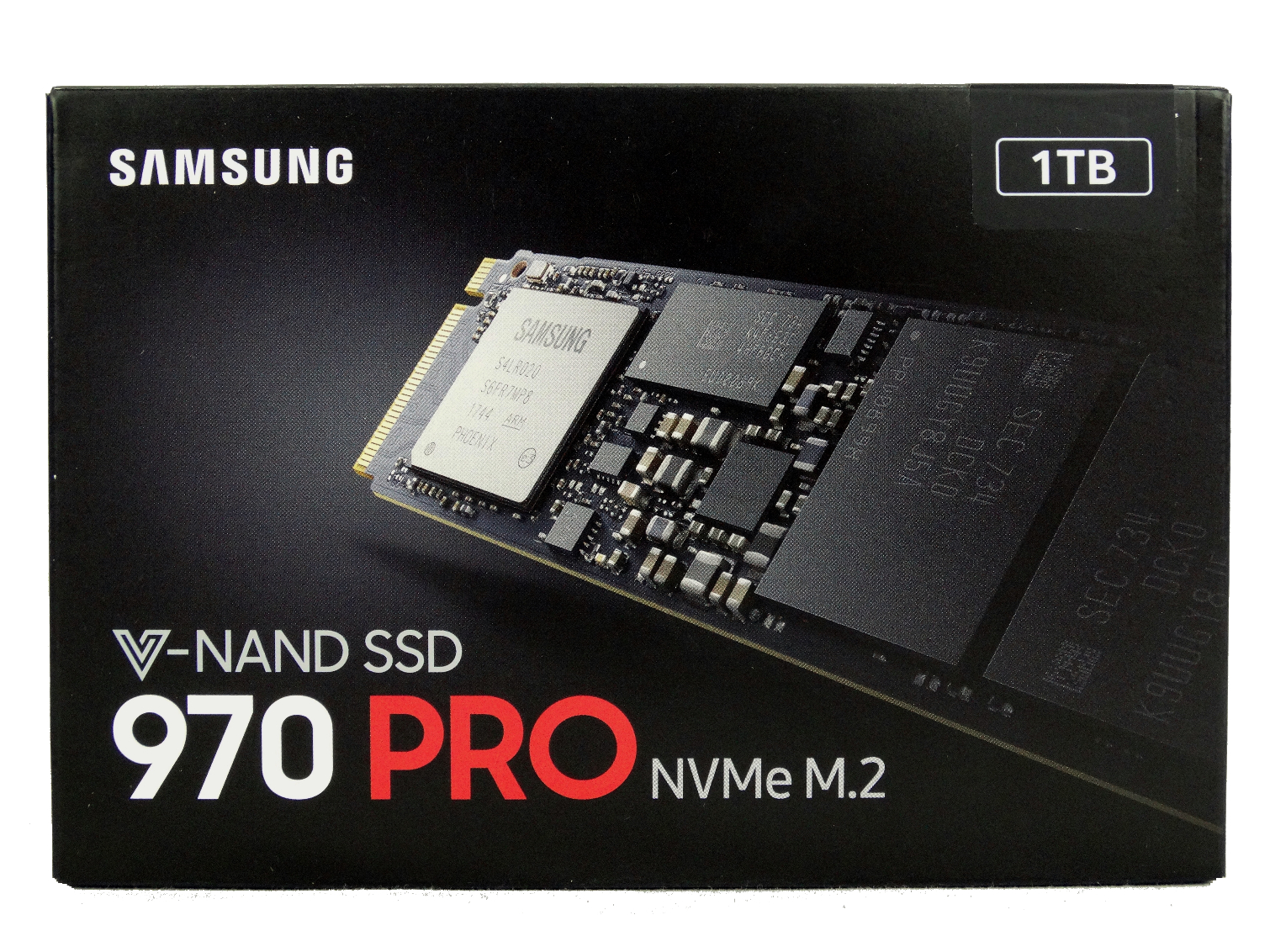


The Samsung 970 Pro comes to market in a familiar package that pays homage to the company's two previous consumer NVMe SSDs. Samsung lists the five-year warranty but doesn't include performance details for retail shoppers. The fine print points you to the Samsung website for more information.
In the package, we found the drive nestled between two form-fitted plastic inserts. Samsung also includes a paper manual (not pictured).
A Closer Look
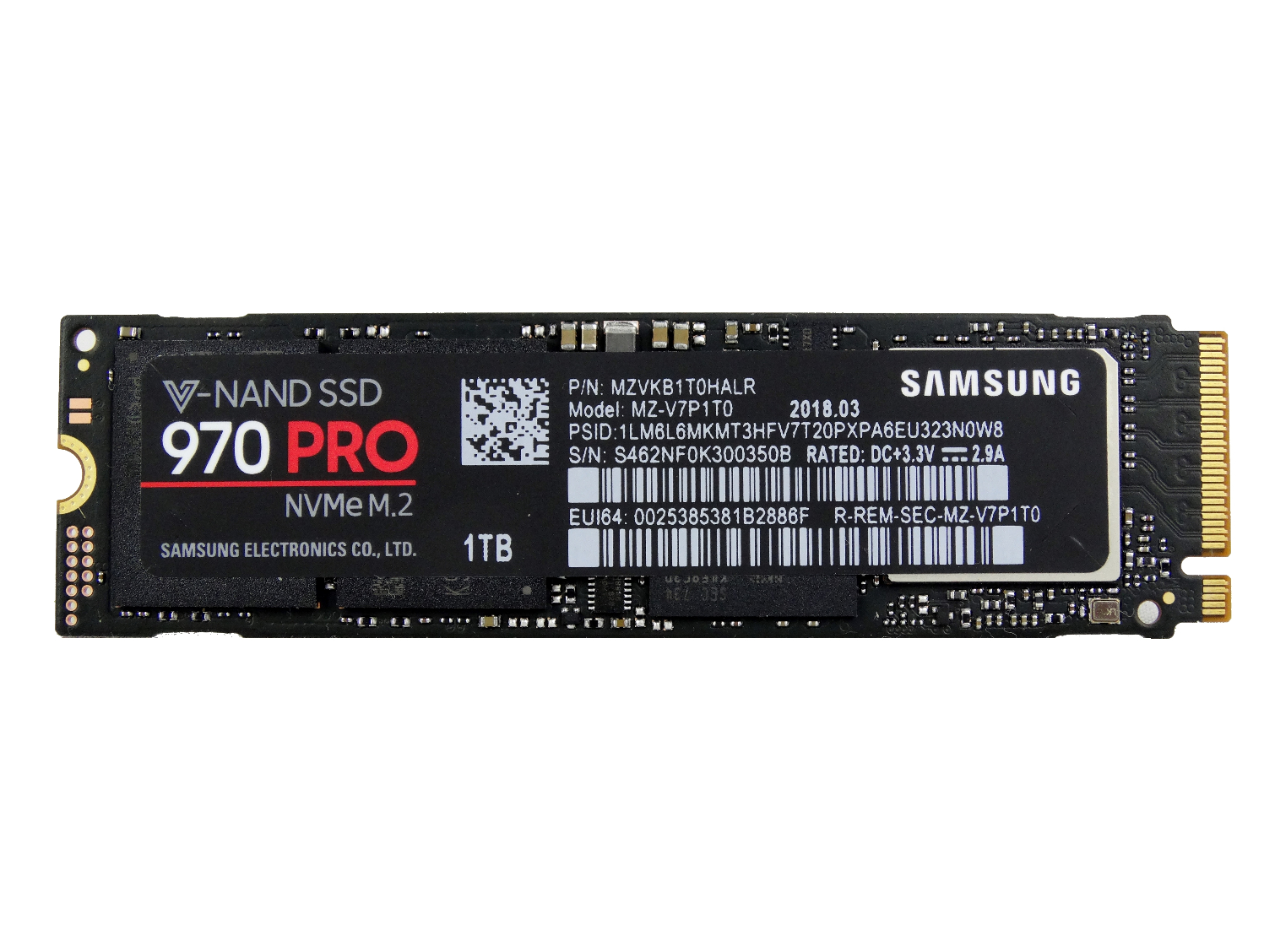
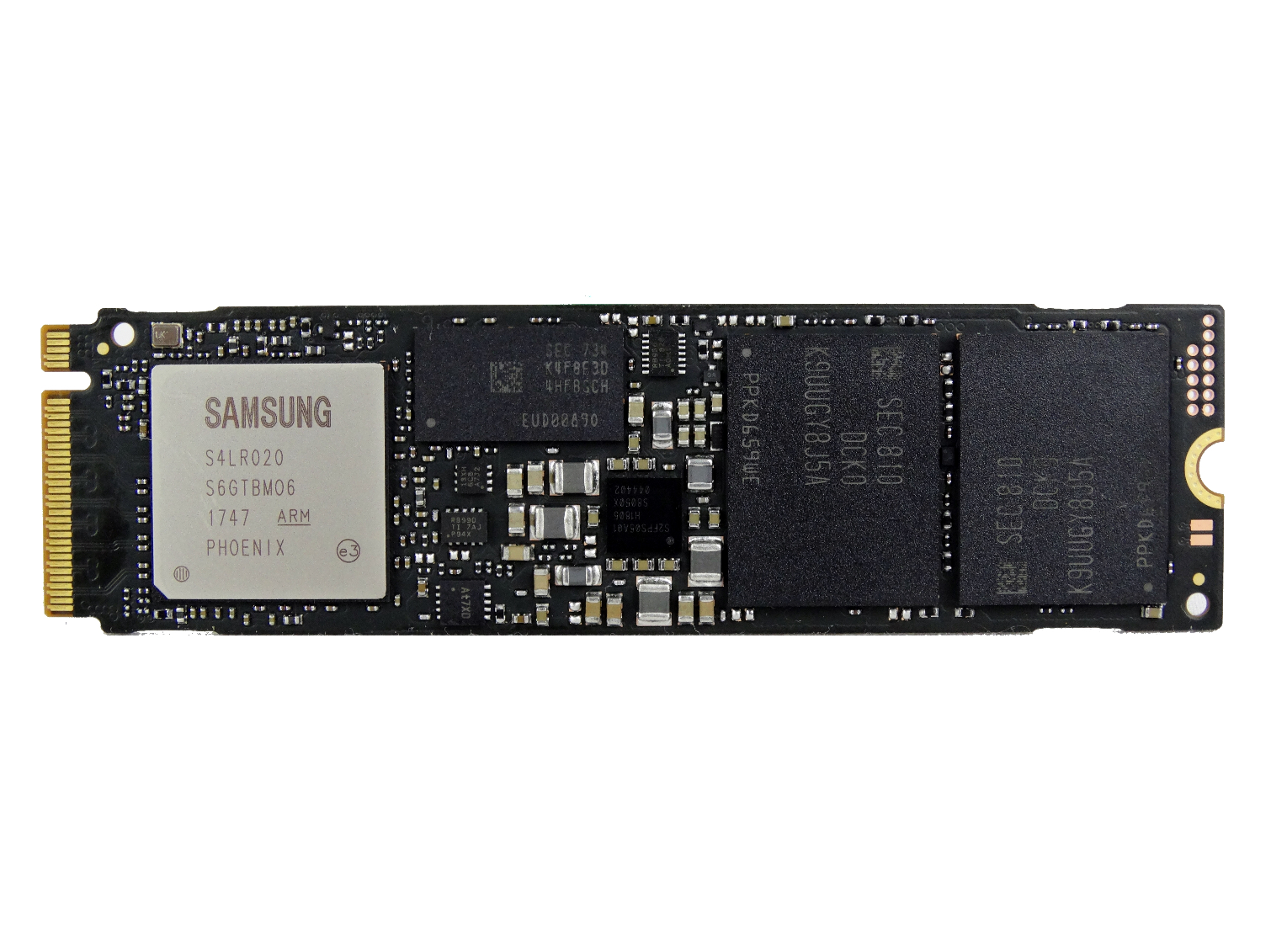
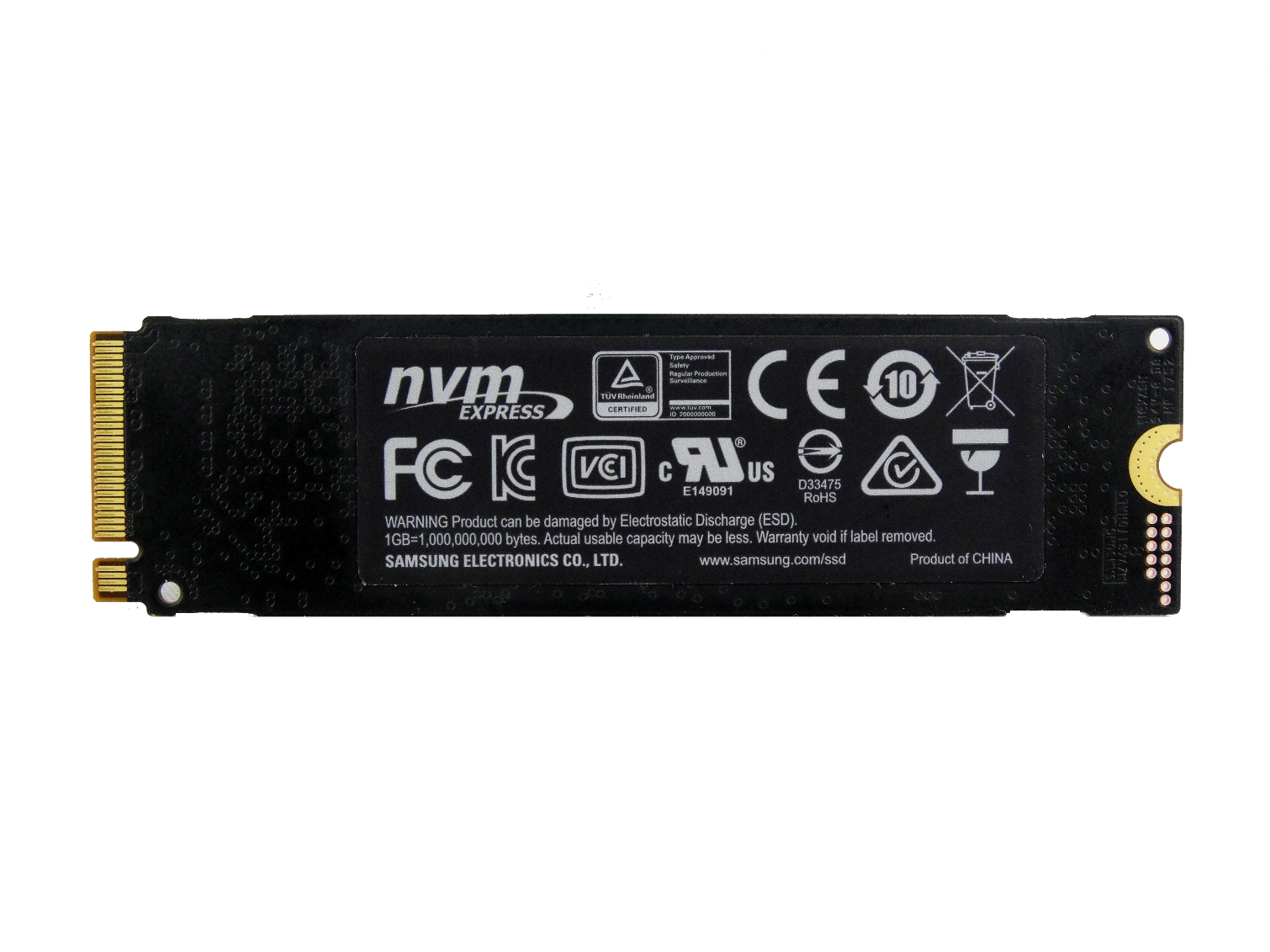
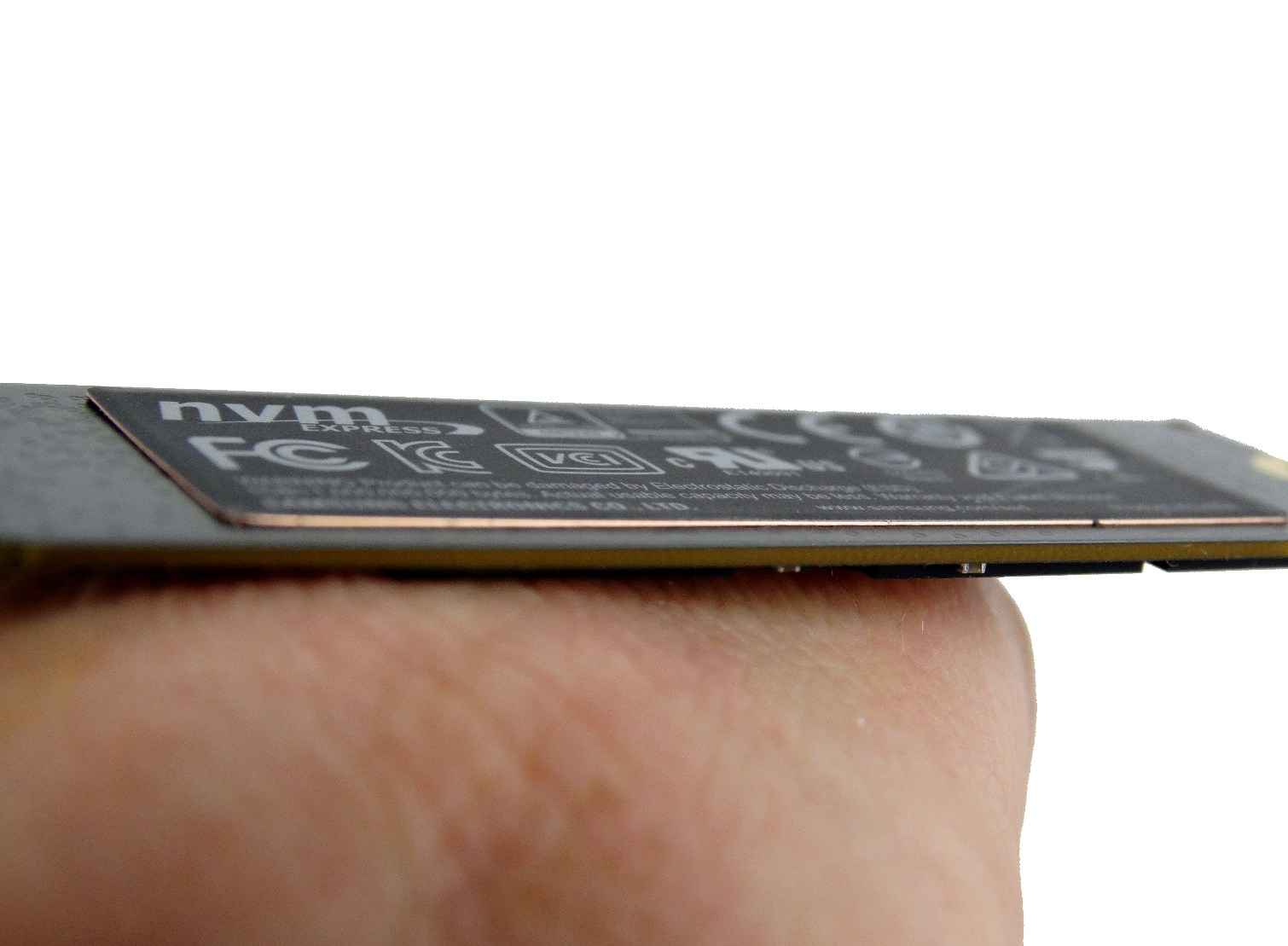
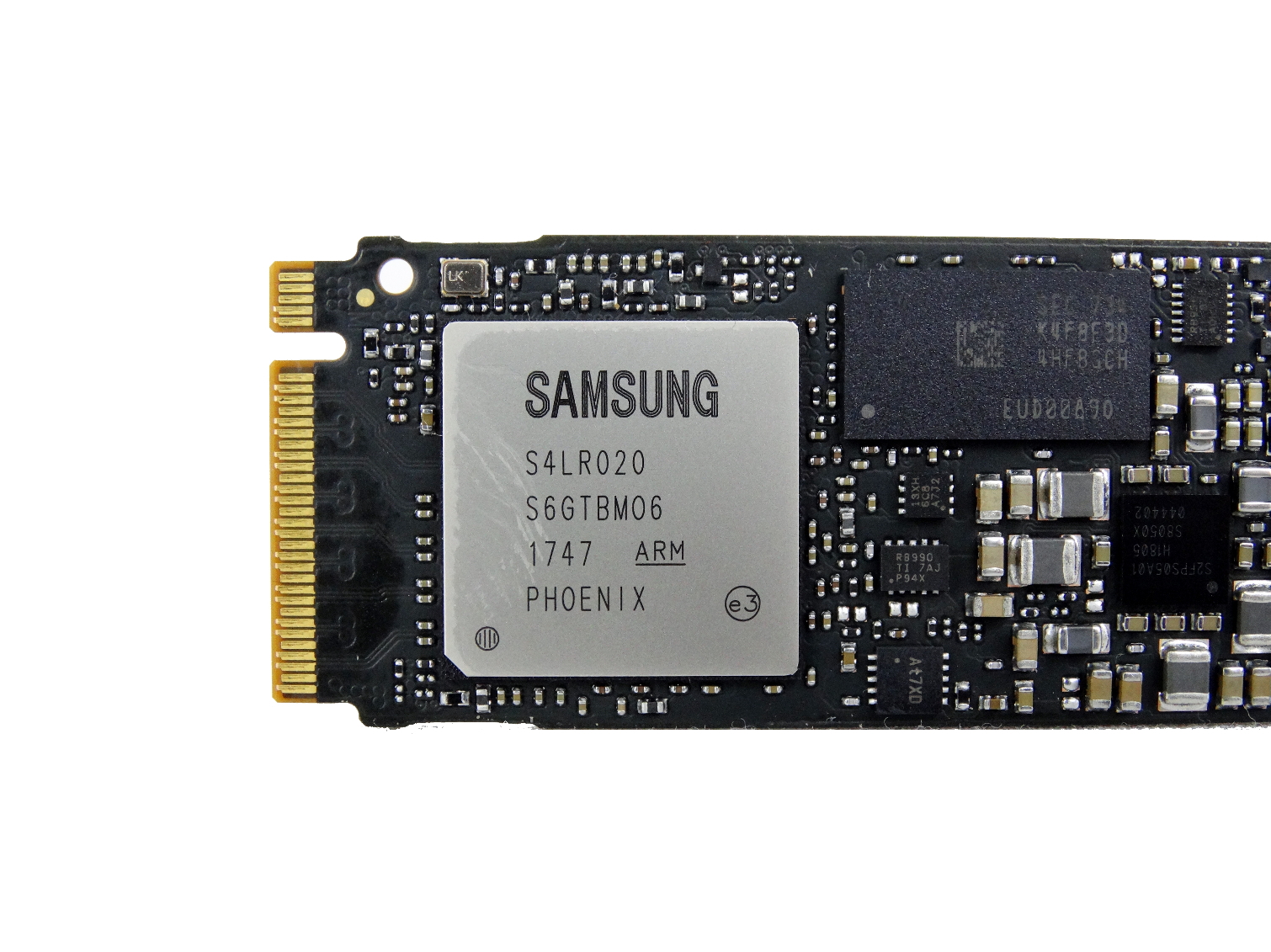
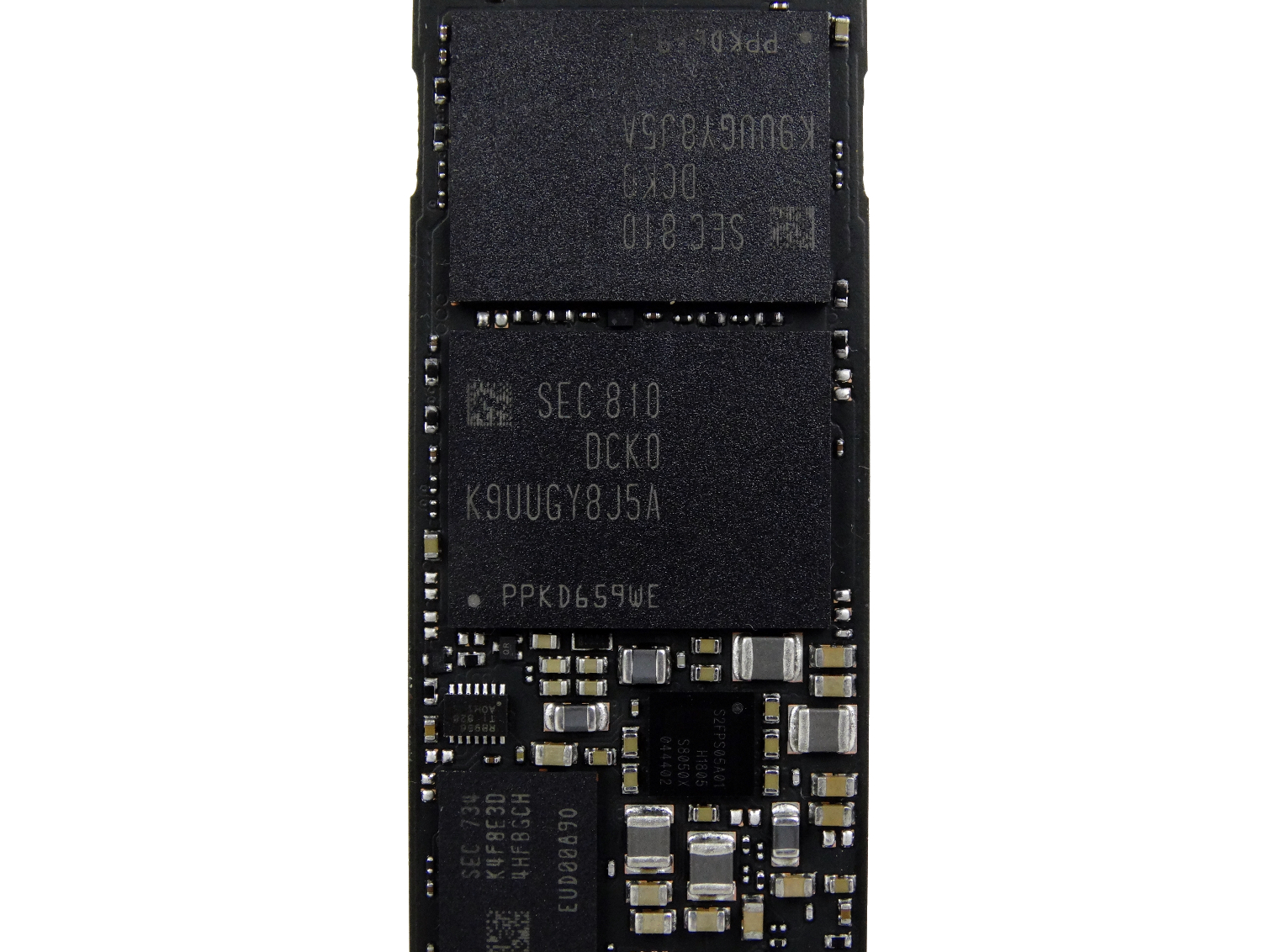
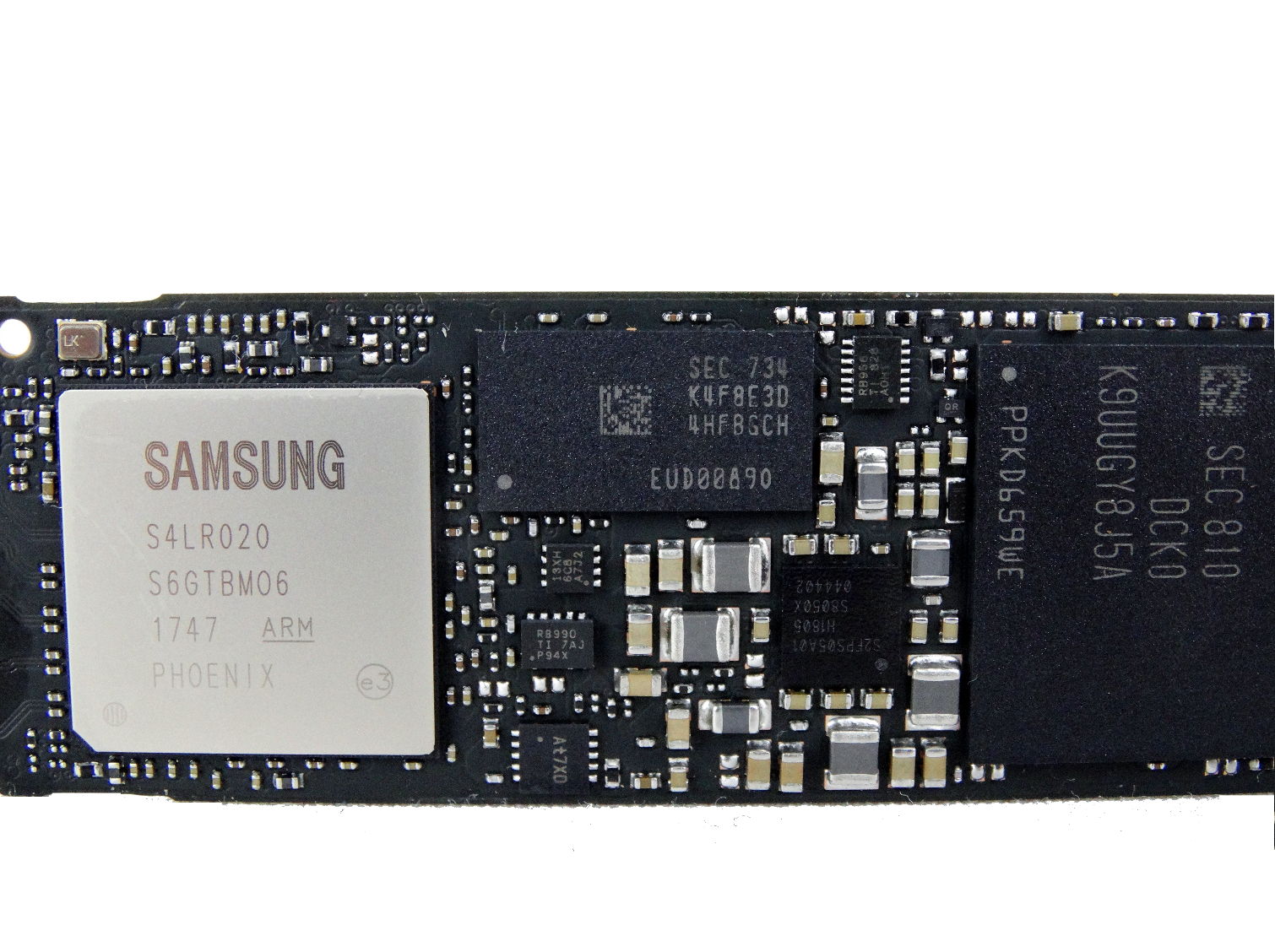
Both capacities conform to the M.2 2280 S3 (single-sided 3mm) specification. In the past, Samsung stuffed one side of the PCB with four NAND packages and combined the controller and DRAM in an expensive multi-chip package. This time, the controller and LPDDR4 DRAM are separate. That should also help tame the heat emanating from the nickel-plated controller.
We didn't measure the thickness of the copper plate on the back of the drive, but it looks slightly thicker than the version used on the 960 Series.
MORE: Best SSDs
MORE: How We Test HDDs And SSDs
MORE: All SSD Content

Chris Ramseyer was a senior contributing editor for Tom's Hardware. He tested and reviewed consumer storage.
-
Sakkura That sustained sequential write is pretty amazing. All the other drives are wheezing but the 970 Pro just does. not. care.Reply -
tyns78 Regardless of the steep extra cost, the Optane 900P should be included. If you're willing pay for this then the 900P is also a consideration.Reply -
enzoozzytiger Why do your randread and randwrite numbers lag Samsung's spec by such a huge margin? If your numbers are accurate, then I can't recommend this SSD, as Micron 9200 MAX is offering way much better performance (I measured 760k+ 4kB randread IOPS) at a much lower per TB price (3.2TB for $1700).Reply -
AgentLozen Aren't the HP EX920 and Intel 760p based on the same controller? I remember that the 760p performed really well a few months back. It would have been interesting to see how it performs today.Reply -
CRamseyer Samsung rates NVMe SSD with 4 workers at QD4 each. It's like running four applications with each on a CPU core and then hitting your drive with requests 4 times for each one. When we have ample software to can operate that way, we'll test that way.Reply
We did run a test like that just to see half a million IOPS and actually got almost 600,000 IOPS.
The EX920 and 760p use the same controller but very different firmware. The HP has a larger write buffer. -
oldnconfuzed I'm looking to reduce wait times associated with start-up, changing characters, and especially loading zones in a game (Elder Scrolls Online). Money isn't a huge consideration (within logical reason). Assume high-end "everything else" (CPU, Graphics, etc). Do I want:Reply
1) a 970 Pro (Windows + Game)
2) a 970 Evo (I keep reading that the differences might be "unnoticeable"
3) two 970 Evos in Raid 0
4) an Optane 900P
My current system runs older "non-M.2 NVMe" SSD's (2 in raid 0) ... so I'm well versed in the difference between them and a hard drive.
Thanks kindly in advance! -
AgentLozen The difference between a 970 Pro and a 970 EVO isn't perceivable in a home environment playing games. I would buy a single 970 EVO or something that competes with it like the Intel 760p or HP EX920. If money isn't a problem, you could go with 1TB and install all of the games you want.Reply
I hope this helps.

